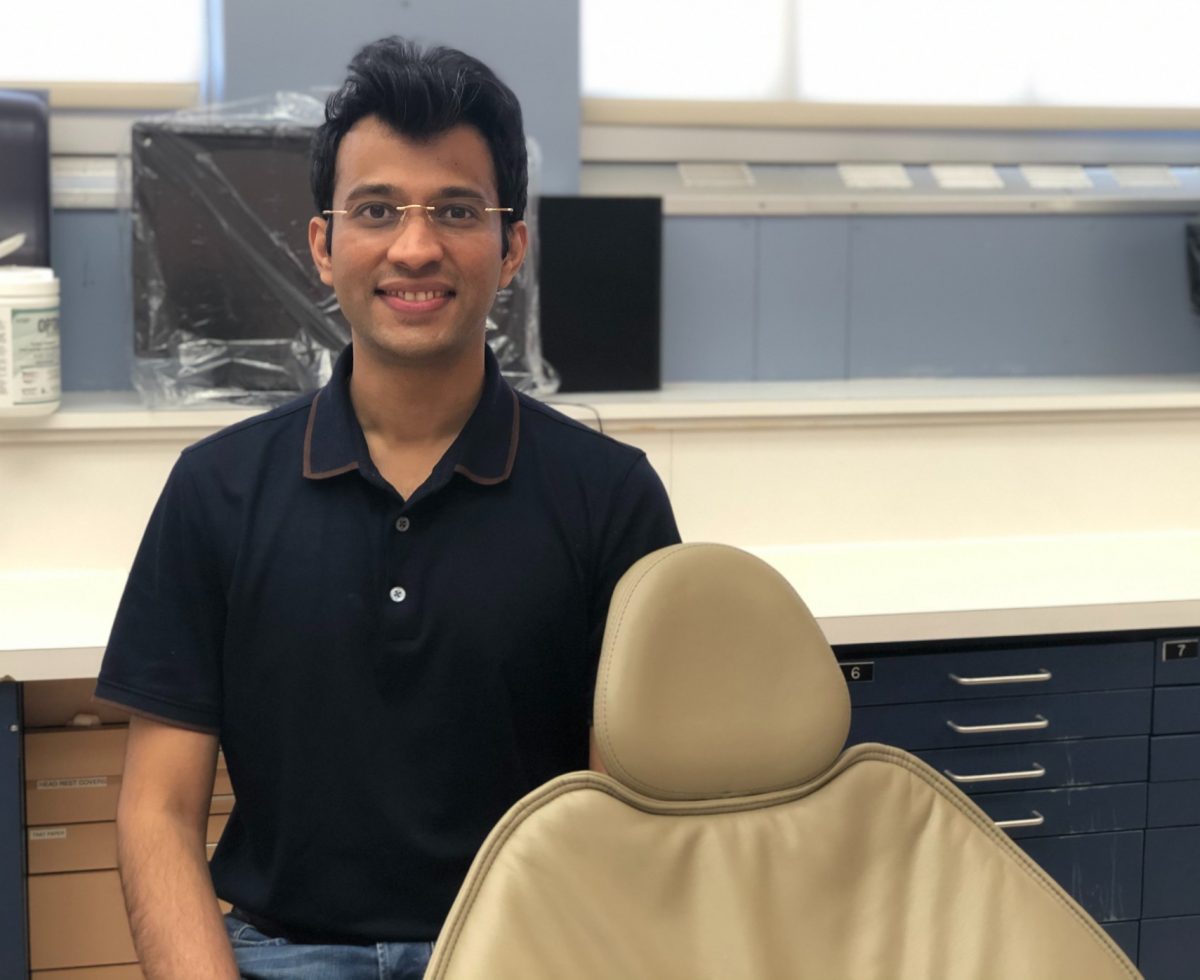
Dr. Rohan Kirtane, a master of science in orthodontics student, won first prize at the Dr. Gerald Niznick College of Dentistry Research Day.
Dentistry students present studies at Research Day
Three years of hard work and sacrifice culminated in Dr. Rohan Kirtane winning first prize at the Dr. Gerald Niznick College of Dentistry Research Day. The effort the master of science in orthodontics student put into his research project paid off.
“I think I was effective in presenting my research in such a way that people found it interesting,” Kirtane said. “It’s a very humbling experience. Getting recognition from people outside of my own department and my own thesis committee is a great honour.”
Kirtane was one of ten people who presented their research over Zoom on April 17 at the Research Day event, which was held in conjunction with the Manitoba Dental Association’s Annual Convention.
Kirtane’s research compared two devices, called orthopedic removable functional appliances, used to correct a jaw problem in children. He collaborated with the University of Manchester to collect data on an appliance that is used in the United Kingdom (called Twin Block) to compare with a device used in Manitoba (called van Beek Headgear-Activator).
His research concluded that the two functional appliances work in different ways. The Twin Block is more effective in moving the lower jaw forward and the van Beek Headgear-Activator is more effective in repositioning the upper jaw backwards.
“So once the diagnosis about the underlying jaw problem is made, an orthodontist can choose between the two appliances, depending on which jaw needs correction,” Kirtane said. “The effect of functional appliances is consequential in preventing bullying, trauma to the prominent upper front teeth and even extraction of adult teeth or jaw surgery to correct the jaw problem.”
Dr. Raj Bhullar, professor and associate dean (research), Dr. Gerald Niznick College of Dentistry, said that research is important in a student’s education because it’s the cornerstone for progress and is essential for evidence-based decision making.
“The student presentations this year were all of high quality, combining clinical and basic research,” Bhullar said. “The time put in by the students in the presentations was clearly evident in the quality and content.”
The competition was so close that four presenters tied for second place. They included Dr. Vivianne Cruz de Jesus, a PhD candidate in oral biology, Dr. Grace Kyoon-Achan, an associate researcher with The Children’s Hospital Research Institute of Manitoba, Dr. Carlo Sgarbanti, a master of dentistry in periodontology student, and Dr. Nadine Williams, a master of science in orthodontics student.
Cruz de Jesus’ research looked at whether there is a difference between the microbes found on children’s teeth and the microbes in their saliva.
“We found that there is a significant difference between the microbes in the dental plaque and oral swab samples of young children,” Cruz de Jesus said. “We also found that there is a difference between the oral microbes of caries-free children and those with severe tooth decay, and because of that, maybe in the future, scientists can look at the microbes on children’s teeth to identify children at higher risk of developing tooth decay.”
Kyoon-Achan studied the impact of the Children’s Oral Health Initiative (COHI), an early childhood tooth decay prevention program aimed at children, caregivers and pregnant women in First Nations communities. Kyoon-Achan conducted focus groups with COHI dental therapists and dental worker aids.
“The COHI staff said it’s a good program,” Kyoon-Achan said. “It’s an important one. It is helping where it can. The changes they’re seeing aren’t huge changes but it is working to the extent that more early childhood oral health awareness is being created in First Nations communities and referrals are being made to additional dental care where needed. Children’s oral health can be improved within the context of the social determinants of health.”
Sgarbanti’s research compared the effectiveness of a commercially available water flosser and dental floss on dental implants.
“According to our data, there are no significant differences between the groups that used a water flosser or dental floss,” Sgarbanti said. “So they appear to be equally effective. It was not a total surprise, but it may have interesting implications for implants maintenance.”
Williams studied a specific self-etching primer (Transbond Plus Self Etching Primer) that is used to bond brackets for orthodontic treatment. She found that this product could be used multiple times for periods up to 24 hours without significantly affecting the strength, though it is strictly a single use product according to the manufacturer.
“My in vitro study found that you can use this product multiple times over a prolonged period without affecting the clinical bond strength significantly,” Williams said. “This explains why clinicians in North America already have success when using this bonding protocol. Orthodontists use this protocol to reduce practice overhead costs.”






